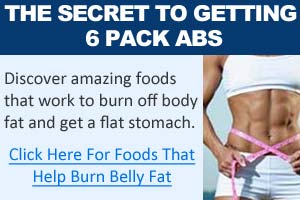Having a clear goal is the ONLY way to start. If you want to gain, maintain or lose, that is a goal. Know what you want before you start.
You'd be floored to find out just how many people are frustrated with their results but when asked exactly what they are trying to do, they have no idea.
2. Figure Out How Many Calories A Day You Need
In your case, you say you are skinny and tooth-pick like. But in the next sentence you state you know you don't eat.
[Snap Rubber Band On Wrist Here For Behavior Modification]
When I was 16, I didn't eat either, I skipped many meals (especially on weekends) and I tried all kinds of protein powders and supplements when I was clearly failing at nutrition.
My mom would cook big meals and I'd barely finish my plate before running off to do something. All the while wishing I was bigger and not so skinny.
There's so many simple ways to calculate your calories. That should be your very next step. Once you know what you want to do, you need to know your nutritional intakes in order to obtain that goal. It's not going to be hard at all but if you don't know, you cannot possibly get anywhere.
In other words, if you don't know how many calories a day you need for a certain goal, then don't expect anything different.
3. Figure Out How Much Protein You Need A Day
It's the building blocks of muscle and it's also the only way you are going to build more muscle or keep the muscle you already have today.
Even for burning fat, it's proven that getting enough protein will actually make you leaner.
Again, there's very simple formulas for this that do not require a degree from MIT to perform. And once you know how much protein you need every day, it's really easy in Step 4 to find out if you are getting what you need.
4. You Must Track What You Eat
 That's right! Needless to say... not a lot of people do
this. They just bulk so they eat anything in sight. Or they
want to burn fat so they just quit eating. If you don't
track what you are eating, you are just guessing.
That's right! Needless to say... not a lot of people do
this. They just bulk so they eat anything in sight. Or they
want to burn fat so they just quit eating. If you don't
track what you are eating, you are just guessing.
And guessing is no way to meet a goal. Once you know how much you need to eat, you can easily track that and meet your daily goals. Once you get into a routine (certain foods and portions) you'll have a very good idea of what you eating.
Tracking what you eat is a must. At this point, in only 4 steps, you've just outlined the foundation for nutrition!
5. Choosing An Exercise Routine
Here's a clue... it involves every major muscle group. A good basic workout should include:
- Legs (squats, lunges, leg extensions, leg curls, leg press)
- Shoulders (military press, dumbbell raises, side laterals)
- Chest (bench press, flyes, dips)
- Back (pull-ups, rows, deadlifts, lat pull-downs)
- Arms (ez-bar curls, barbell curls, dumbbell curls)
- Abs (hanging leg raises, incline crunches)
- Cardio (for the heart)
I could go on and on with this question and post 500 routines and reps and sets and you’d still be confused. So let me ease the confusion by saying this.
THERE IS NO GOLDEN ROUTINE THAT WILL WORK FOR EVERYONE!
I've tried several routines. Max-OT, Tom Venuto's supersetting, Optimum Anabolics and I'll tell you something. I've gotten gains out of all of them and they all have various philosophies. For less then $100, I have enough programs to try for a year.
Here's proof.
Do you see the same people in your gym, doing the same things, and a year later they look the same? It's really quite simple. If you keep doing what you've always done, you will keep getting what you've always gotten.
There's many variations on exercises and routines you can do. And you'll find out a ton of them while browsing around on forums and reading fitness sites. And while you might be tempted to stick with just one. Don't. Try it, evaluate it, and try another one. After about 6 months, you'll know your body very well and what it responds to. You will have tried many exercises and you'll know if you like something and if something else just doesn't work out.
6. Deciding On Supplementation
While 97% of your progress will come from nutrition and training there are still a few basics to consider. There's also a point when you might want to go beyond the basics if you want the optimal amount of gains.
But what are the basics of supplementation?
Daily multi-vitamin Omega 3 and 6 EFA complex (fish oil, flax seed) Whey protein (specifically for after workouts)
Just that small amount of supplementation is all you should need to bring your nutrition levels to 100%. Those are the basics. It's pretty simple.
As you progress down the line, you might want to consider going beyond the basics.
7. Monitoring Your Progress
I cannot tell you how many people do not follow this rule. If you don't take measurements, track your progress or inspect yourself in a mirror, it's pretty difficult to impossible to know where you've been to know where you are going.
Making small daily goes is a wonderful method of keeping the momentum moving forward and keeping yourself motivated to reach your goals. This is difficult when you don't keep track of what you just did in order to beat a personal best.
It’s also the #1 reason why people get so frustrated with nutrition and training and progress in general. They just look at themselves at that very moment and decide immediately if the last 4 months of effort was worth it. They don't take into account they did better then the last workout and they don't quite realize they lost a pant or dress size. They just make judgments on what they perceive to be reality at that moment.
Methods of tracking your progress include:
Tracking what you eat Tracking your workouts in a notebook or other method Taking periodic measurements of standard body areas using a variety of methods Taking periodic photographs
When you measure your progress on a frequent but not daily basis, you will soon see that your efforts are paying off. And if there is a course adjustment necessary you can quickly correct it before it's too late. This critical stage is often overlooked because most people barely can figure out what to eat let alone be bothered to track their progress.
You will start to notice people around you year after year complaining of the same things they complained about the year before.
Would you build a house without tracking its progress? Would you drive your car without monitoring its performance and getting regular tune-ups? For those of you with children, you look at report cards and homework quizzes as a method of tracking your child’s scholastic performance. You know where there might be a problem and can correct it before it becomes a major issue. Many of you track the performance of your portfolio holdings.
So why not track the progress of your workouts?
With just a few simple fundamental steps, you can ensure that all of your workouts and waking moments are spent on the right path to fitness. No matter what your goals may be, male or female, if you follow these steps, you will ensure your success.
>> Click here for a unique program to help you build 41lbs of drug free muscle in 6 months

 When I was 16, I asked myself this very same question that
I received from a frustrated 16 year old. It went something
like this...
When I was 16, I asked myself this very same question that
I received from a frustrated 16 year old. It went something
like this...